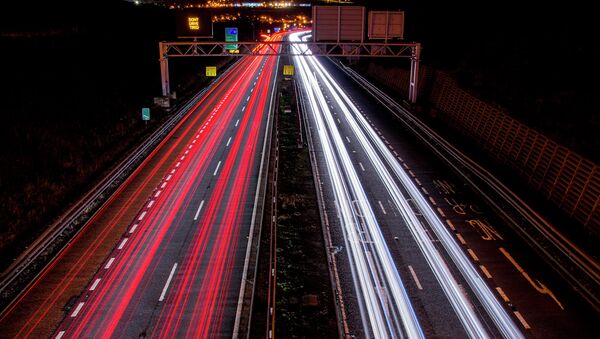The project — called Persuade — is aimed at using rubber granules made from used vehicle tyres to reduce noise from road traffic and at the same time to give a considerable amount of used tyres in Europe a second lifecycle.
Rubber granules from recycled car tyres are bound with a synthetic resin, such as polyurethane and sometimes mixed with stone aggregates and chemical additives, to enhance durability and skid resistance, in a process tried in Japan and Sweden in previous projects which contains no bitumen.
Researcher Luc Goubert from the Belgian Road Research Centre told Euronews:
"You have three parameters — you have the texture, you have the absorption and you have the elasticity — and elasticity is one parameter that has not been exploited so far."
Hans Bendtsen, a researcher in road traffic noise, said an eight decibel reduction that has been measured in tests was "remarkable".
Scratching the Surface
Covering roads with recycled tyres isn't new. The idea was invented in Sweden in the late 1970s. Optimistically, the Persuade website says the current project began with a "kick-off meeting on September 28, 2009, and since then Persuade has made good progress".
"We're trying to develop a material that has a high, good noise reduction, has good durability, a good price, and also a good friction," said researcher Hans Bendtesen.
He said the use of the rubber-containing material provides good friction, which he measures by lowering a fifth wheel from another car and finding out how much grip he gains… or loses.
"I'm measuring friction with this special car that has a fifth wheel. By lowering the wheel with this button, I can determine the friction on this special road," he said.
So far, the project website reports, its inadequate durability has been the major barrier for its use as a noise abatement measure, and this is still the case. Another slight damper on the project is fire resistance, since scientists in the late-90s noted that "rubber may burn fiercely".
Japanese scientists also found the weather caused problems when a rubberised surface is laid onto sand to make a road. When laid in interlocking blocks onto sand — rather like floor tiles — on the road, rain and snow are an issue.
Since the rubber surface is not porous, the water runs through the cracks in the interlocking blocks, and washes the underlying sand away, breaking up the road surface, which it did after 25 days in the case of the Japanese tests. Thus, the rubber road made out of interlocking blocks is no use in countries where it rains or where snow melts.
Yet the EU scientists aren't being put off by such hurdles and are still plugging away at their €4.5 million road test and hoping to keep a grip on themselves.




